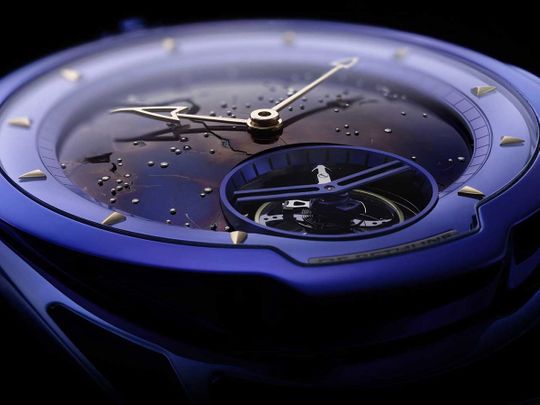
Dubai: The first meteor shower of the year is expected this weekend with the Quadrantid meteor shower late night on Friday, January 3, and stretching until dawn of Saturday, January 4. The concept of timekeeping and star gazing have always had an inextricable link. The idea of using a celestial object like a meteorite in a wristwatch isn’t exactly, ahem, an alien concept. From ancient Egyptians who created the first solar calendar by observing the heliacal rising of Sirius, to Greeks who turned to the moon to calibrate their concept of time, we’ve always looked heavenwards to keep track of time.
Today, the use of a meteorite on the dial of a watch (or the case in some instances) is more a sign of exclusivity. Since these space rocks are unusual choice in the watchmaking process, the timepieces that feature meteorites are instantly more interesting than others. Further the presence of crisscross lines seen on meteorite dials known as the Widmanstätten pattern ensure that each dial is unique.
Though meteorites are uncommon they are not as rare as the marketing spiel of watch brochures suggest. Most discovered meteorites are first presented to academia for scientific research, analysis, and classification. The surplus is for public consumption, the price and rarity of these space rocks really depends on where it was found. The fact that it was presented to academia and entered into scientific literature actually boosts the commercial value of a meteorite. For example a 342 gm unbroken space rock from the Campo del Cielo, a massive crater about 1,000 km northwest of Buenos Aires where a huge iron meteorite landed 4,000-5,000 years ago, sells for about $230 on the Internet.
To read more about and see 10 outstanding examples of meteorites used in watches, continue reading on the WatchTime Middle East website.











